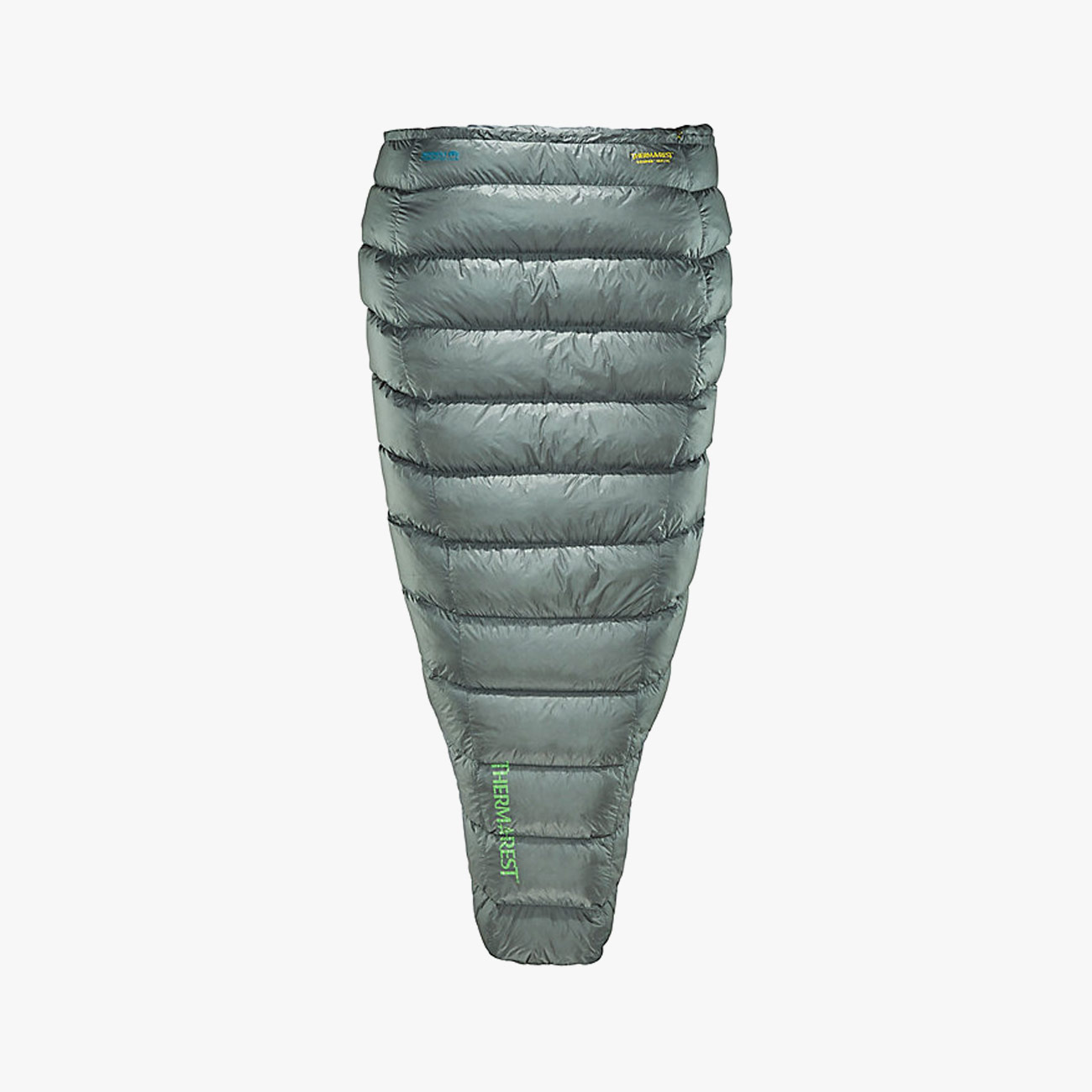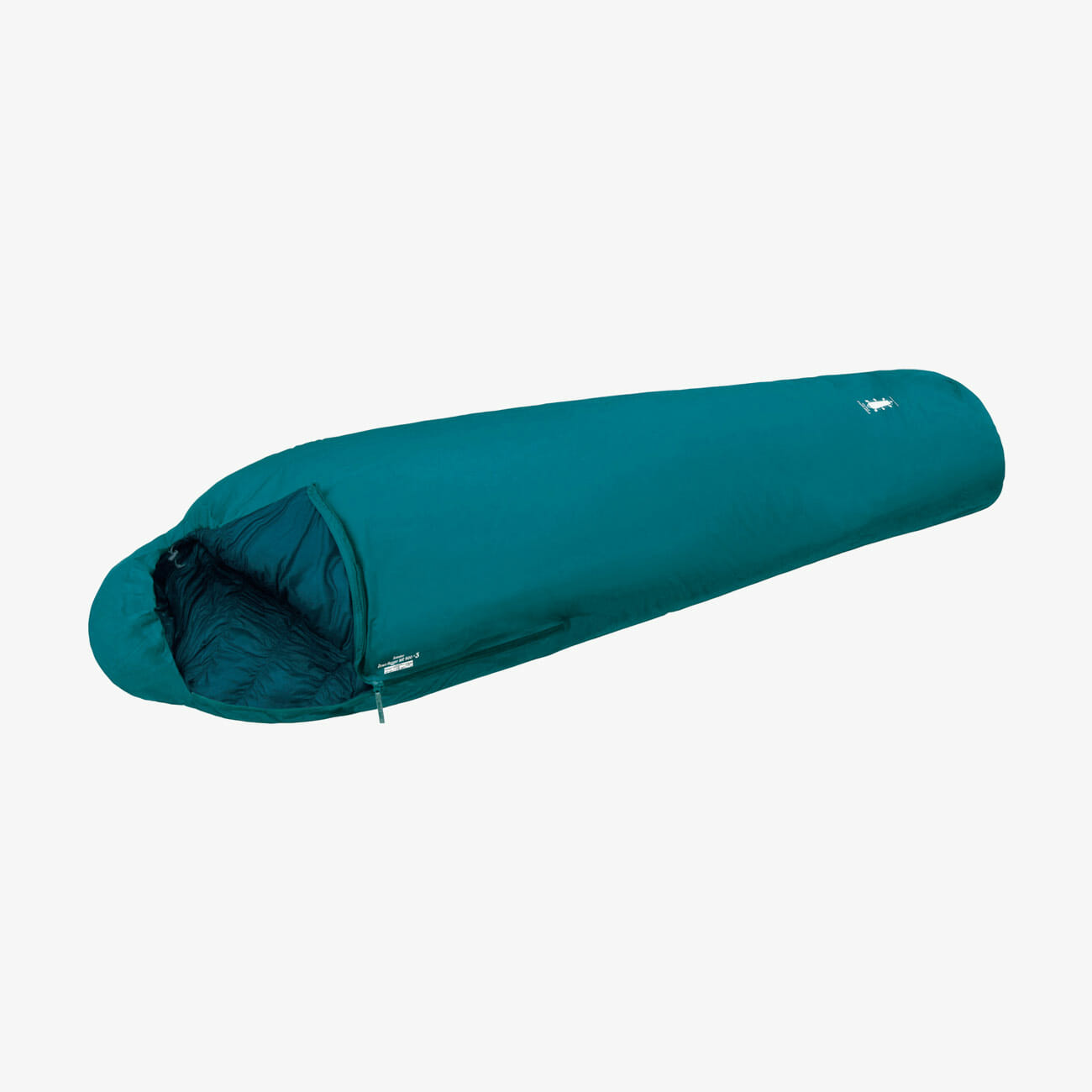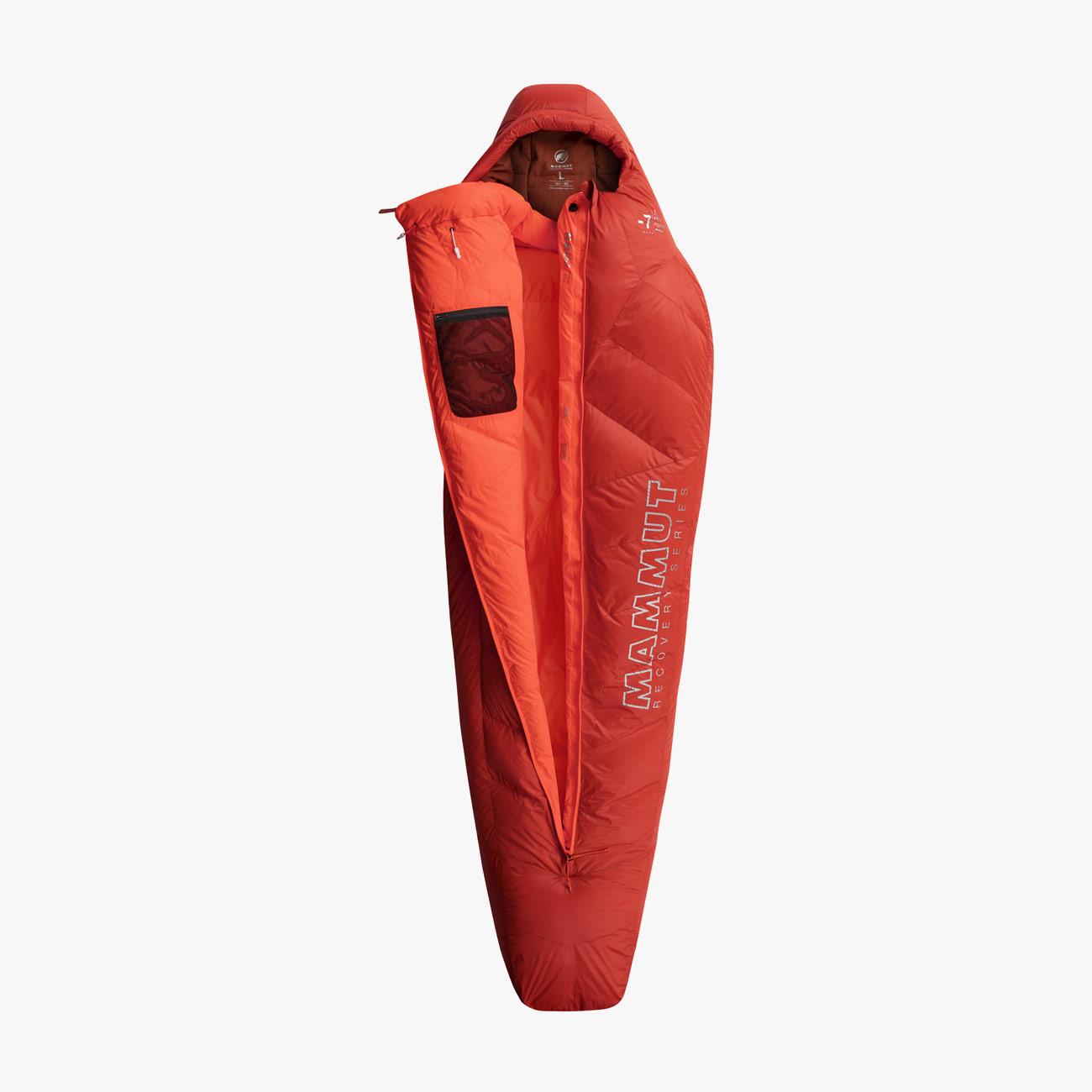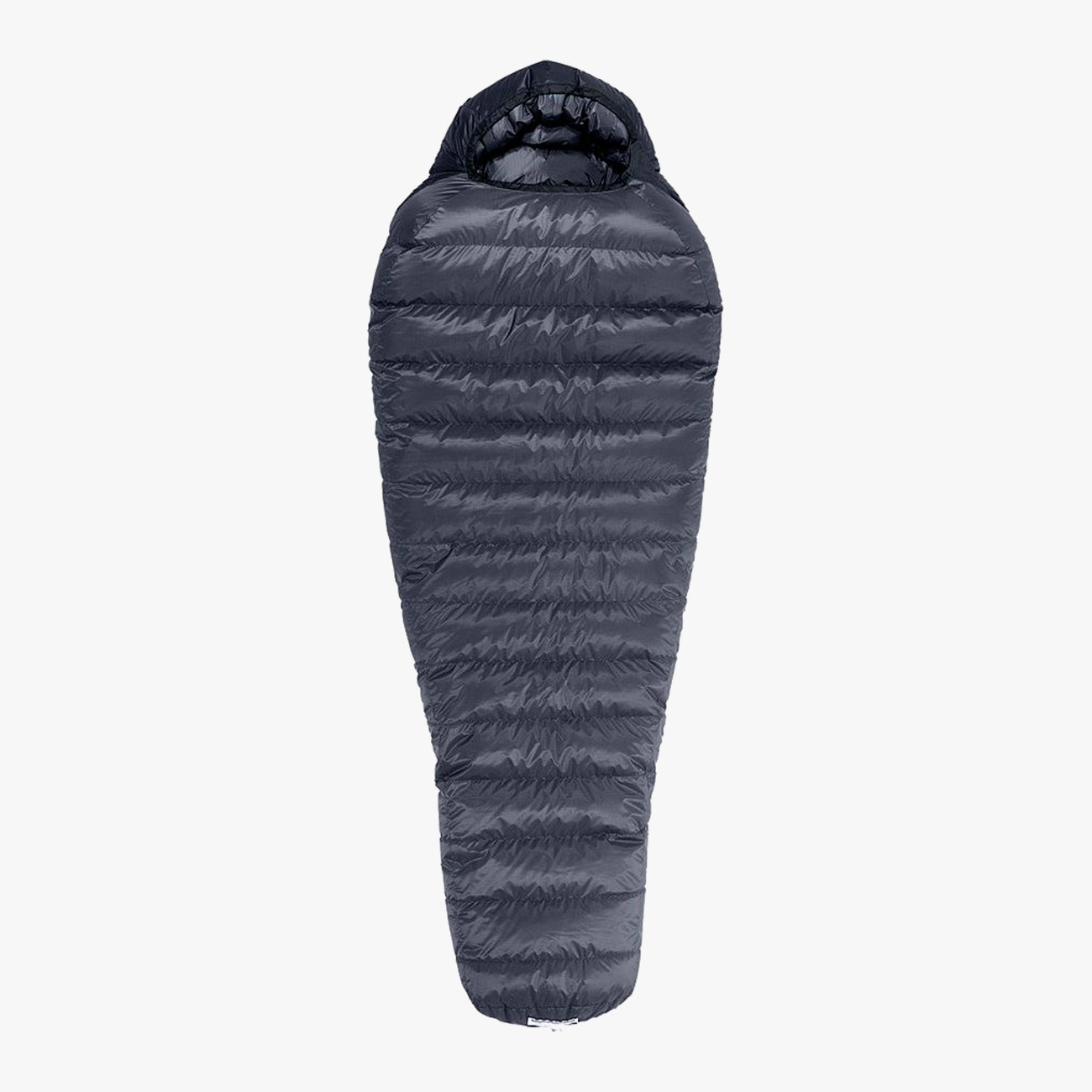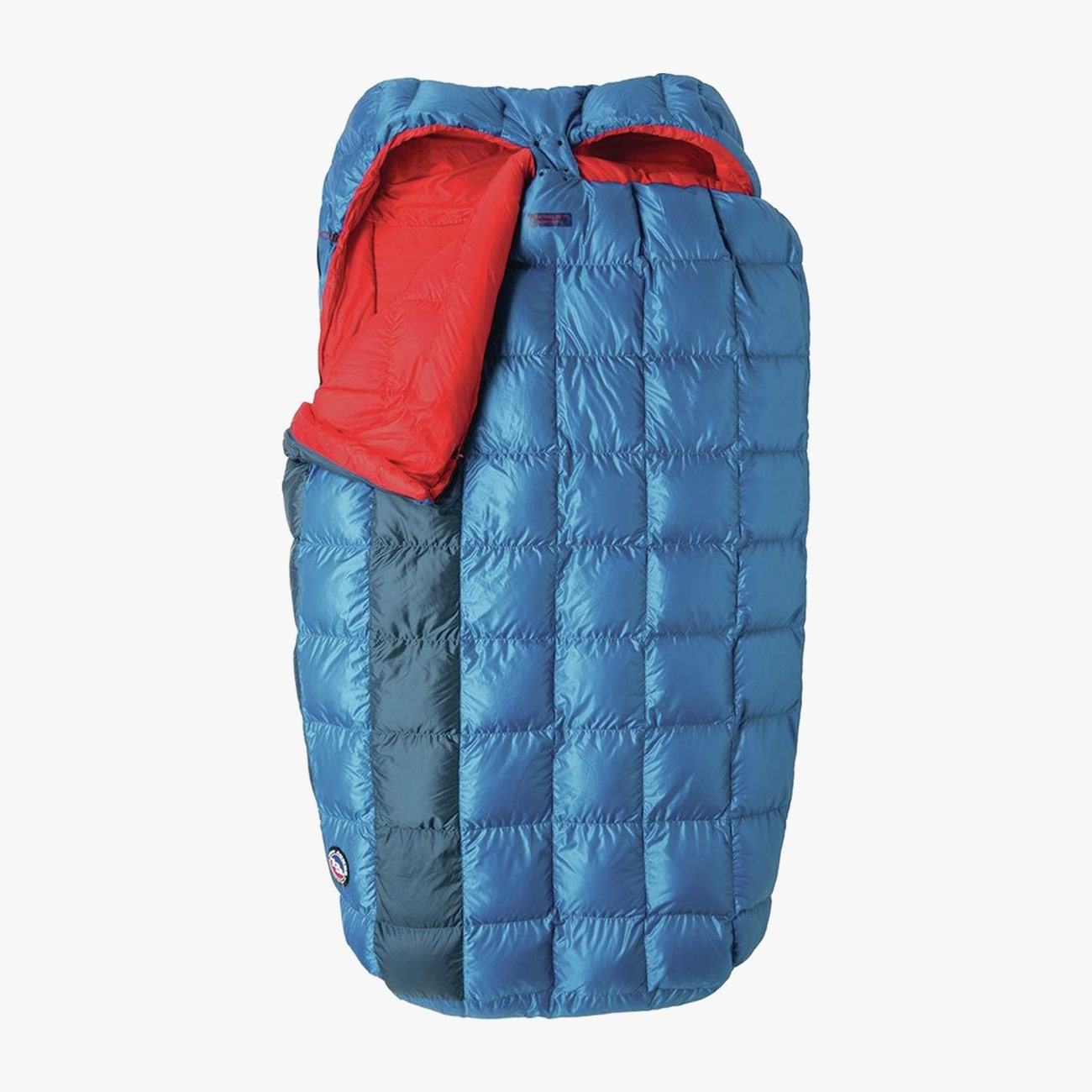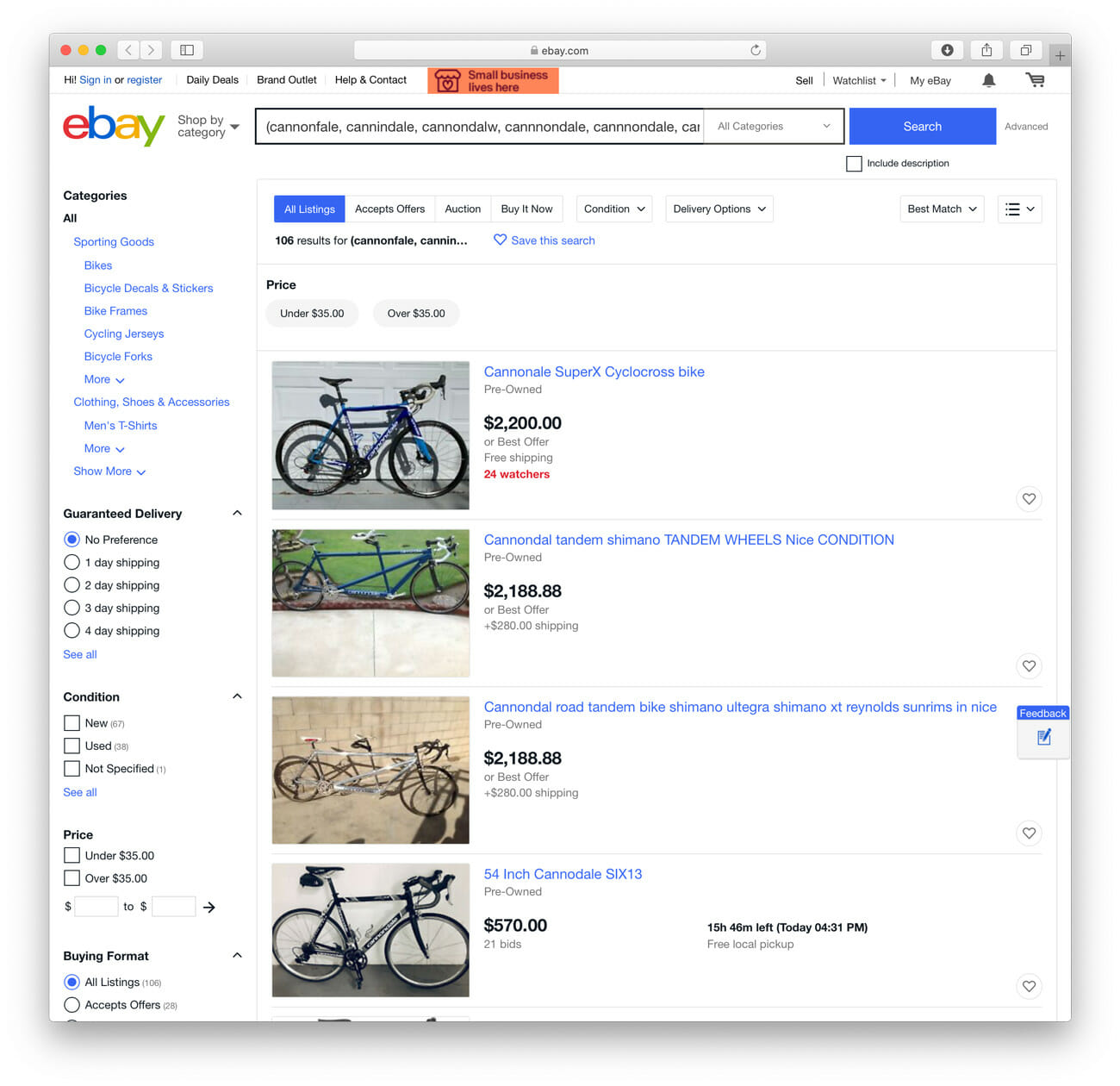If you were lucky enough to tune into the Discovery Channel’s Man vs. Wild during its heyday, you might’ve witnessed Bear Grylls, a former British Special Air Service operator and the show’s host, make TV magic by gutting a dead camel and demonstrating how to climb inside the carcass for warmth and shelter. The sequence of teeth-clenching footage is perhaps the best reminder that hey, sleeping bags are pretty cool.
Sleeping bags are a camping essential, and even those of us who never bed down under the stars typically keep one around the house as emergency bedding. We tend not to upgrade our sleeping bags with the same frequency as other pieces of outdoor gear, like hiking boots or down jackets. But sleeping bags have come a long way in the past decade. This guide, which we’ve organized by fill type and temperature rating, represents the best of the current class.
- 45 Degrees: Therm-a-Rest Vesper 45°
- 30 Degrees: Montbell Seamless Down Hugger WR 900 #3
- 20 Degrees: Mammut Perform Down Bag -7C
- 0 Degrees: Western Mountaineering Kodiak MF
- Best for Two People: Big Agnes Sentinel
The Best Synthetic Sleeping Bags
- 15-50 Degrees: The North Face Dolomite One
- 30 Degrees: REI Co-op Trailbreak 30
- 20 Degrees: Nemo Equipment Forte 20
- 15 Degrees: Mountain Hardwear Lamina Eco AF
How to Choose the Best Sleeping Bag
- About Temperature Ratings
- Down vs. Synthetic Insulation
- Price
Therm-a-Rest Vesper 45
45 Degrees
The best option for a warm-weather sleeping bag isn’t a sleeping bag at all; it’s a quilt. Trail quilts have been a go-to for ultralight backpackers for a while but are increasingly becoming popular amongst more mainstream campers too. With less material, trail quilts are lighter and more packable. Therm-a-Rest’s Vesper 45 is an excellent intro to this offshoot category — at 12 ounces, the quilt will go unnoticed in a backpack, but it still has functional features like an enclosed foot box and straps to secure it to a sleeping pad.
Weight: 12 ounces
Fill: 900-fill Nikwax hydrophobic down
Compressed Volume: 4.5 x 6 inches
Other available temperature ratings: 20, 30 degrees (F)
Montbell Seamless Down Hugger WR 900 #3
30 Degrees
Montbell’s newest crop of Down Hugger bags has a lot going for them. For one, Montbell secured this bag’s down insulation in place using a system that it calls Spider Baffle, where an array of synthetic threads hold onto down clumps to help maintain their loft. It eliminates the need for baffles created by stitching, optimizing the bag for warmth and durability. Montbell employed elastic in the liner to help the bag “hug” a sleeper, which eliminates dead airspace. And, to top it all off, this particular Down Hugger model comes with a Gore-Tex Infinium exterior, making it remarkably weather-resistant.
Weight: 1 pound 3 ounces
Fill: 900-fill Power Ex Down
Compressed Volume: 5.5 x 10.9 inches
Other available temperature ratings: 40 degrees (F)
Mammut Perform Down Bag -7C
20 Degrees
Mammut recently overhauled its entire line of sleeping bags with the idea of upgrading the overall outdoor experience by improving sleep. There are synthetic as well as down bags in the line, optimized for casual camping as well as expeditions. The Perform Down Bag -7C — equivalent to roughly 20 degrees Fahrenheit — is notably versatile and feature-rich. Its mummy-style hood, which secures with a magnetic closure, is lined with a soft and noiseless fabric designed to keep things quiet. The bag also has a pocket to keep small items close, and comes with a sleeping mask and earplugs.
Weight: 2 pounds 4 ounces
Fill: 700-fill down
Compressed Volume: 9 x 11.2 inches
Other available temperature ratings: 0, 32 degrees (F)
Western Mountaineering Kodiak MF
0 Degrees
The ultralight experts at Western Mountaineering have earned the company a reputation among the hardcore hiking set. It designed its four-season sleeping bag to do one thing — keep you warm — and thanks to its 850-fill down insulation, it does that while maintaining a remarkably low weight at roughly 3 pounds (depending on size).
Weight: 2 pounds 15 ounces (size regular)
Fill: 850-fill down
Compressed Volume: 9 x 18 inches
Big Agnes Sentinel 30
Best for Two People
For most of us, camping is rarely, if ever, a solo activity. Part of the joy of spending time outside is doing so with your significant other. But designs that let you zip two sleeping bags together are cumbersome at best, so Big Agnes made one bag to fit two. The best thing about the Sentinel is that it maintains a small degree of separation — you can snap a divider between the hoods, just in case you prefer your sleeping bag partially unzipped and your partner doesn’t.
Weight: 3 pounds 8 ounces
Fill: 650-fill down, DownTex hydrophobic treatment
Compressed Volume: 9 x 20 inches
Other available temperature ratings: n/a
- 45 Degrees: Therm-a-Rest Vesper 45°
- 30 Degrees: Montbell Seamless Down Hugger WR 900 #3
- 20 Degrees: Mammut Perform Down Bag -7C
- 0 Degrees: Western Mountaineering Kodiak MF
- Best for Two People: Big Agnes Sentinel
The Best Synthetic Sleeping Bags
- 15-50 Degrees: The North Face Dolomite One
- 30 Degrees: REI Co-op Trailbreak 30
- 20 Degrees: Nemo Equipment Forte 20
- 15 Degrees: Mountain Hardwear Lamina Eco AF
How to Choose the Best Sleeping Bag
- About Temperature Ratings
- Down vs. Synthetic Insulation
- Price
The North Face Dolomite One
15-50 Degrees
In terms of bang for buck, casual campers will be hard-pressed to find a better deal than The North Face’s Dolomite One. The sleeping bag uses a modular zipper design that gives it a range from 15 degrees up to 50, eliminating the need to own multiple sleeping bags for camping in different environments. The Dolomite One is best for base camping near the car, but The North Face also makes a down-filled mummy version that has the same modular design but is lightweight enough for backpacking.
Weight: 5 pounds
Fill: polyester
Compressed Volume: n/a
Other available temperature ratings: n/a
REI Co-op Trailbreak 30
30 Degrees
REI’s Trailbreak sleeping bags are also hard to beat when it comes to price, thanks to the brand’s in-house development strategy. Its no-frills mummy design includes a roomy foot box for a little extra movement, plus a small pocket near the head for essential small items.
Weight: 2 pounds 8 ounces (size regular)
Fill: polyester
Compressed Volume: 5.7 liters
Other available temperature ratings: 20 degrees (F)
Nemo Equipment Forte 20
20 Degrees
Unique to Nemo sleeping bags is the spoon shape, which the company created for campers who want a mummy-style sleeping bag without the claustrophobia of actual mummification. The spoon shape isn’t very spoon-like, but it does offer extra room at the elbows and knees for shifting around and side sleeping. The Forte also includes zippered “gills” that extend its temperature range — just open them up and let the breeze in.
Weight: 2 pounds 14 ounces (size regular)
Fill: PrimaLoft RISE synthetic fibers
Compressed Volume: 9 liters
Other available temperature ratings: 35 degrees (F)
Mountain Hardwear Lamina Eco AF 15F
15 Degrees
Mountain Hardwear set sustainability in its sights when it created this undyed sleeping bag using mostly recycled materials. The resulting white look is unique, eye-catching, and will bear the marks of your adventures as reminders of where you’ve been. But beyond looks and eco-friendliness, the Lamina Eco AF is a quality bag that’ll get you through cold nights in a tent.
Weight: 2 pounds 6.4 ounces
Fill: polyester
Compressed Volume: 8 x 16.5 inches
Other available temperature ratings: 30 degrees (F)
How to Choose the Best Sleeping Bag
Temperature Ratings
Every sleeping bag comes with a temperature rating, usually represented, roughly, by a number in its name. That number comes from third-party lab testing. Those labs test for two numbers, a comfort rating, and a lower limit rating. The former is the environmental temperature in which a sleeping bag can provide sufficient warmth for colder sleepers; the lower limit rating represents the temperature at which a warm sleeper will be comfortable.
The number in a sleeping bag’s name may not be its exact temperature rating; brands tend to round numbers to the nearest five or zero. For example, REI’s Trailbreak 30 has a lower limit rating of 29 degrees Fahrenheit and a comfort rating of 38 degrees Fahrenheit.
Also, sleeping bags with lower temperature ratings typically use more material, so they will be bigger and take up more space in a backpack or closet.
Should You Get Down or Synthetic Insulation?
Sleeping bags provide warmth by trapping air inside their fluffy filling, which is typically either down or synthetic. Choosing which is right for you is a matter of pros and cons.
Down, which comes from geese and ducks, tends to provide more warmth in a smaller volume than most synthetic insulation. Down insulation comes with a fill rating that denotes its quality. For instance, a 30-degree sleeping bag with 800-fill down will provide the same amount of warmth as a 650-fill bag rated to the same temperature, but it will do so with less insulation, so it will pack down smaller. Down’s main drawback is that it clumps when it gets wet, but many brands today use down that’s treated to be water-repellant. Down sleeping bags are also almost always more expensive than synthetic ones.
Synthetic insulation consists of manufactured fibers that attempt to mimic down. Synthetic insulation tends to be more water-resistant, durable and affordable but also bulkier and heavier.
Price
Depending how often you use it, a sleeping bag can last you for years; it’s a long-term investment. Sleeping bags are also expensive, and their price is a product of the materials used. As a rule, down insulation is more expensive than synthetic, and higher fill powers (more warmth for weight) are more expensive than lower ones. Because they use more material, cold-weather sleeping bags tend to be more expensive than warm-weather sleeping bags.

